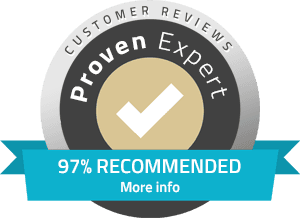Local SEO methods focus on optimizing your online presence to attract more business from relevant local searches. Here are the key steps and strategies to implement effective local SEO:
1. Google My Business (GMB) Optimization
Complete Your Profile: Fill out your GMB profile with accurate and comprehensive information, including your business name, address, phone number (NAP), website, hours of operation, and business categories.
Add Photos and Videos: Upload high-quality photos and videos to showcase your business, products, and services.
Update Regularly: Keep your GMB listing updated with new information, special offers, and events.
Encourage Reviews: Ask satisfied customers to leave positive reviews on your GMB profile and respond to them to show engagement.
2. Local Keyword Research
Identify Local Keywords: Use tools like Google Keyword Planner, Moz, or Ahrefs to find keywords that include your location (e.g., “dentist in Los Angeles”).
Long-Tail Keywords: Focus on long-tail keywords that reflect local intent, such as “best coffee shop in downtown Chicago.”
3. On-Page SEO for Local Search
Title Tags and Meta Descriptions: Include local keywords in your title tags and meta descriptions.
Header Tags: Use H1, H2, and other header tags to structure your content with local keywords.
NAP Information: Ensure your business Name, Address, and Phone number (NAP) is consistent across your website and other online platforms.
Local Content: Create content that is relevant to your local audience, such as local news, events, or guides.
4. Local Citations and Directories
Consistent NAP: Ensure your NAP information is consistent across all local citations and directories.
Submit to Local Directories: List your business on local directories such as Yelp, Yellow Pages, and industry-specific directories.
Structured Citations: Use structured citations on sites like Google My Business, Bing Places, and Apple Maps.
Unstructured Citations: Ensure your business is mentioned on blogs, news sites, and social media platforms relevant to your industry.
5. Reviews and Ratings
Encourage Customer Reviews: Ask customers to leave reviews on Google, Yelp, Facebook, and other review sites.
Respond to Reviews: Respond to both positive and negative reviews to show that you value customer feedback and are committed to improving your service.
Review Management: Monitor and manage your online reviews regularly.
6. Local Backlink Building
Local Partnerships: Build relationships with local businesses and organizations to earn backlinks from their websites.
Local Sponsorships: Sponsor local events, charities, or sports teams to get mentions and backlinks.
Write guest posts for websites and blogs in your area.
7. Localized Content Marketing
Blog Posts: Write blog posts about local events, news, and topics relevant to your audience.
Videos and Infographics: Create videos and infographics that highlight local culture, events, and activities.
Community Engagement: Engage with your local community through social media and your website.
8. Social Media Optimization for Local SEO
Local Hashtags: Use local hashtags in your social media posts to reach a local audience.
Location Tags: Tag your location in your social media posts to increase visibility.
Engage Locally: Engage with local influencers, customers, and businesses on social media.
9. Mobile Optimization
Responsive Design: Ensure your website is mobile-friendly and offers a good user experience on all devices.
Local Schema Markup: Use schema markup to provide search engines with more information about your business.
10. Analytics and Tracking
Google Analytics: Use Google Analytics to track your local SEO performance and identify areas for improvement.
Google Search Console: Monitor your search traffic, keyword performance, and fix any issues using Google Search Console.
GMB Insights: Use Google My Business Insights to understand how customers find your listing and what actions they take.



